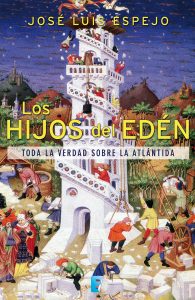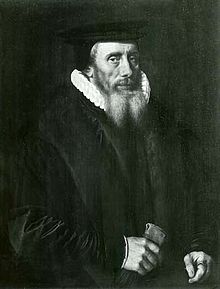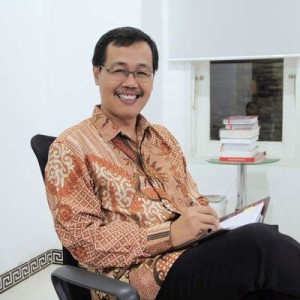Garden of Eden
Le Plongeon, Alice Dixon
Alice Dixon Le Plongeon (1851-1910) was the wife of Augustus Le Plongeon and the daughter of Henry Dixon a pioneering British  photographer. She was a keen photographer herself as well as an amateur archaeologist and author. The Le Plongeons were among the first to study the Maya sites of Chichen Itza and Uxmal. She wrote articles and lectured on the Maya culture and also had an interest in spiritualism and Theosophy. Although they worked together, the Le Plongeons developed slightly theories regarding the origins of the Maya. One of her eye-catching claims was that the Garden of Eden had been located in Central America(a).
photographer. She was a keen photographer herself as well as an amateur archaeologist and author. The Le Plongeons were among the first to study the Maya sites of Chichen Itza and Uxmal. She wrote articles and lectured on the Maya culture and also had an interest in spiritualism and Theosophy. Although they worked together, the Le Plongeons developed slightly theories regarding the origins of the Maya. One of her eye-catching claims was that the Garden of Eden had been located in Central America(a).
(a) Alice Dixon Le Plongeon – Atlantisforschung.de (atlantisforschung-de.translate.goog). Clinch Valley News, August 3, 1888
Bates, Robert Stanley
Robert Stanley Bates is a retired US naval officer. He is a supporter of Robert Sarmast’s theories that Atlantis and a/the Garden of Eden had been situated in the Eastern Mediterranean in the region of Cyprus. In 2004, Bates was the expedition leader to the suspected site of the First Garden of Eden/Atlantis. In 2006 he was the consultant to the History Channel for the second expedition in their lead story for its “Digging for the Truth” series.

Although very little has been heard from Sarmast in recent years, in two papers in 2014(a) and 2017(b) Bates attempted to breathe new life into Sarmast’s ideas(a) with a claim of fresh evidence. This new support is the 1978 claim of Ya‘akov Petrovitch Malovitskiy (1932-2002) that the Levantine Basin was a sunken continent. In my opinion, Malovitskiy’s claim along with Bates’ rehashing of much of Sarmast’s arguments fails to locate Atlantis and/or the Garden of Eden.
>In April 2022, it appeared that Sarmast was once again trying to resurrect interest in his Cypriot Atlantis location(c). I have not had this report confirmed. However, I now see that Bates is due to have a short book [1961] published in February 2023 entitled The Eden-Atlantis Project which puts forward the case for a third expedition to find Eden/Atlantis near Cyprus. This proposed expedition is apparently to be led by Bates, now promoted to commodore, with minimal reference to Sarmast(d).<
(a) https://squarecircles.com/wp-content/uploads/2018/08/FirstEdenAnalysis.pdf
(b) EAP-Essay-FINAL.pdf (evolving-souls.org)
(c) https://www.travelmole.com/news/atlantis-discovered-near-cyprus/ *
Usai, Luigi
Luigi Usai is the author of La Mappa di Atlantide (The Map of Atlantis) [1814], which, by his own admission, is the result of twenty days of intense study of the subject in early 2021!
Some of his principal claims are that Plato’s mention of the Atlantic Sea was a reference to the Western Basin of the Mediterranean, in the middle of which lay the island of Atlantis that today are the islands of Corsica and Sardinia, but was then conjoined. He specifies the Sardinian region of Sulcis as the home of the Atlantean capital!
His website(a) offers a list of 27 points in support of his thesis. The site itself seems to lack focus wandering into unrelated areas such as suggesting a link between his Corsican/Sardinian Atlantis and the pre-Etruscan Villanovan culture of central Italy. He then proposes that ‘Moors heads’ on the flags of Corsica and Sardinia may have a Sumerian origin!
While I also favour a Central Mediterranean location for Atlantis, I must totally reject his date of 10,000 years ago for its existence as there was no civilisation in Athens or Egypt to attack at that time.
His paper ATLANTIDE ESISTE ED ERA IL GIARDINO DELL’EDEN (ATLANTIS EXISTS AND WAS THE GARDEN of EDEN) added the further claim that his Sardinian Atlantis was also home to the Garden of Eden.
At the very end of 2021, Usai claimed that he had discovered “a hidden unknown mysterious submerged civilization in Sicily-Malta Escarpment”(b). Unfortunately, he has not. In July 2021 I was sent several images, including the large image used by Usai, that purported to show anomalous underwater images in the Central Mediterranean, northeast of Malta. At first sight, they appeared to show extensive manmade features. However, further investigation by my correspondent eventually revealed that the images were the consequence of a flawed computer interpretation of sonar data.
>In 2022, Usai published a number of images purporting to show underwater anomalies off the coast of Cuba(c). As Usai has already designated the central region of the Mediterranean as the location of Atlantis I cannot understand his reason for showing such images. Similar anomalies have been found in various parts of the world and explained by Google as data-gathering glitches (see Satellite Imagery). If any of the rectangular features were city walls or streets they would have been kilometres wide – a nonsensical suggestion.<
(a) Why didn’t scientists find Atlantis before Usai Luigi? ? Atlantis found!
(c) Cuba high resolution bathymetry – Atlantis exists! Found by Dr. Luigi Usai (atlantisfound.it) *
Woods, Anthony
Anthony Woods is the author of Atlantis Ireland, published under the auspices of the unaccredited Keystone University(a) in Dublin, with Woods listed as CEO(b). To be blunt, for me as an Irishman, in spite of such an interesting title, I was greatly disappointed. In fact, I was by turn uncertain whether I should laugh or cry.
Woods engages in a generous level of speculation, which was certainly attention seeking. He selectively uses some mythological stories as if history whenever it suits his purpose [p.71]. The content is irritatingly repetitious throughout, references should have been numbered, which along with a few typos, all cry out for an editor.
His core contention is that Stone Age Ireland was a cultural hyperdiffusionist centre. He claims that megalith building, language and religion, all spread globally from Ireland, also known as Atlantis!
Among his many outlandish claims are that:
1.The ancient Irish language is the oldest in the world and is the most extensive with almost a million words [p.142], which is completely wrong by about a factor of six!
2.Irish megaliths are the most spectacular – obviously Woods has never heard of Brittany!
3.Megalith construction spread from Ireland to the world. However respected archaeologists such Aubrey Burl, Mike Parker Pearson and Robert Hensey [1766.6] burst that particular bubble with the their shared view that megalith building originated in France.
According to Woods, “the high concentration of megaliths on the west cost of Britain and France proves that Ireland was the fountainhead, the source of the megalithic mother culture.” The ‘logic’ here eludes me!
4.For some reason Woods thinks islands are ideal for evolution(p139), and that Cro-Magnon Man evolved in Ireland[p.103]!
5.Although Ireland was the island of Atlantis, the city of Atlantis (Cerne) was in Mauritania and is known today as the Richat Structure!
6.The Celts didn’t come to Ireland, they came from Ireland![p.99]
7.Woods makes the modest claim that the Irish visited America thousands of years before Columbus. Which may or may not be true, but what has that to do with Atlantis? [p.93]
In all, this book is not just an Hibernocentric rant. Woods also offers a lengthy diatribe against British imperialism and Vatican political interference, which, although probably justifiable, has also nothing to do with Atlantis
He introduces a range of subjects such as giants, Machu Picchu, Gobekli Tepe and the Garden of Eden, all with Woods’ imagined connection with ancient Ireland!
Apart all the nonsense about ancient Ireland, he barely touches on Plato’s dialogues, except to rubbish his narrative with “It’s clear that Plato’s legend is useful but unreliable, that it combined two separate related places, a lot of exaggeration and several historical errors.”[p.13] and twice patronisingly refers to Plato’s account as “useful but unreliable.”[p.50]
Woods did quote from Ulf Erlingsson, who made a more valliant attempt to link Ireland with Atlantis some years. Erlingsson matched the dimensions of 2000 x 3000 stadia (340 x 227 miles) given by Plato with the diagonal dimensions of Ireland [319.16]. Unfortunately, Erlingsson got it very wrong and Woods copied his error. Plato’s figures were the dimensions of the Plain of Atlantis, while the Central Plain of Ireland is just a fraction of its size(c), being very roughly 150 x 100 miles in extent. Now, who’s unreliable?
At which point, I could take no more and gave up.
Espejo, José Luis
José Luis Espejo (1965- ) is a Catalan researcher and prolific writer(a). His subjects range from Leonardo da Vinci to comparative mythology to Hitler.
In 2009 he published Los hijos del Edén: toda la verdad sobre la Atlántida [1607] (The Children of Eden:  The whole truth about Atlantis), described at the time as the definitive Atlantis book. In this 680-page offering he insists on the reality of Atlantis, but not necessarily with that name.
The whole truth about Atlantis), described at the time as the definitive Atlantis book. In this 680-page offering he insists on the reality of Atlantis, but not necessarily with that name.
His latest book, Ecos de la Atlántida [1606] (Echoes of Atlantis), reviews the destruction and aftermath of an ancient civilisation, which he contends was destroyed 11,500 years ago. He equates Atlantis with Atalaentre of the Hindus, Aztlan of the Amerindians as well as the Hebrew Garden of Eden.
It would appear that the nature of this 512-page book required an understandable amount of speculation.
(a) https://translate.google.co.uk/translate?hl=en&sl=es&u=https://www.joseluisespejo.com/&prev=search
New Hebrides
New Hebrides is an archipelago in the Pacific northeast of New Caledonia and west of Fiji. In 1904 it was dragged into the world of Atlantology, when the Cairo News of Illinois published(a) a sermon by the Rev. Frank de Witt Talmage. He was a son of the celebrated ‘fire and brimstone’ preacher Thomas de Witt Talmage. In his sermon he refers to unnamed explorers claiming that the New Hebrides were the mountain peaks of sunken Atlantis. However, he goes further and infers a connection between Atlantis and the Garden of Eden.
I am indebted to Atlantisforschung.de for unearthing this unexpected piece of information(b). I agree that it is regrettable that the identity of the explorers was not given.
(a) https://chroniclingamerica.loc.gov/lccn/sn93055779/1904-08-21/ed-1/seq-5/
(b) https://atlantisforschung.de/index.php?title=Atlantis,_der_Garten_Eden_und_die_Neuen_Hebriden
Goropius Becanus, Johannes
 Johannes Goropius Becanus (1519-1572) was a Dutch physician and linguist, although he was of the opinion that the Dutch language had been used in the Garden of Eden and was the mother of all other languages(c) ! We hope his knowledge of medicine was better than his linguistics. He was also one of the first to propose the Doñana Marshes of Andalusia as the site of Atlantis(a)(b). This can be found in the Hispanica section of his Opera[1437] published posthumously in 1580.
Johannes Goropius Becanus (1519-1572) was a Dutch physician and linguist, although he was of the opinion that the Dutch language had been used in the Garden of Eden and was the mother of all other languages(c) ! We hope his knowledge of medicine was better than his linguistics. He was also one of the first to propose the Doñana Marshes of Andalusia as the site of Atlantis(a)(b). This can be found in the Hispanica section of his Opera[1437] published posthumously in 1580.
*Goropius also declared that Tartessos was the biblical Tarshish and was the capital of Plato’s Atlantis.*
(a) https://en.m.wikipedia.org/wiki/Location_hypotheses_of_Atlantis#South
(b) https://en.m.wikipedia.org/wiki/Location_hypotheses_of_Atlantis#South
(c) https://en.m.wikipedia.org/wiki/Johannes_Goropius_Becanus
Taprobane (L)
Taprobane is the name of a legendary island in the Indian Ocean, first mentioned by the Greek historical writer Onesicritus (c.360-290 BC). Although it  is generally accepted to be the island of Ceylon, now Sri Lanka(d), there are dissenting voices such as that of Dhani Irwanto, who insists(a) that Taprobane is to be identified with the Indonesian island of Kalimantan (formerly Borneo), where he also locates Atlantis(b) and the Garden of Eden(c). Irwanto argues against Sumatra being Taprobone, an idea supported by some, such as Arysio Santos who also identified Atlantis as Taprobane.
is generally accepted to be the island of Ceylon, now Sri Lanka(d), there are dissenting voices such as that of Dhani Irwanto, who insists(a) that Taprobane is to be identified with the Indonesian island of Kalimantan (formerly Borneo), where he also locates Atlantis(b) and the Garden of Eden(c). Irwanto argues against Sumatra being Taprobone, an idea supported by some, such as Arysio Santos who also identified Atlantis as Taprobane.
(a) https://atlantisjavasea.com/2015/09/26/taprobana-is-not-sri-lanka-nor-sumatera-but-kalimantan/
(b) https://ahmadsamantho.wordpress.com/2015/06/10/a-new-theory-of-atlantis-disclosed/
(c) https://atlantisjavasea.com/2015/09/07/the-biblical-garden-of-eden-was-in-kalimantan-island/
*(d) https://en.wikipedia.org/wiki/Taprobana*
Irwanto, Dhani
Dhani Irwanto (1962- ) is an Indonesian hydraulic engineer, who is the latest proponent of the  Sundaland location for Atlantis, in his April 2015 book, Atlantis: The lost city is in the Java Sea[1093]. A review of his book online(a), shows quite clearly that the author has made a serious effort to match Plato’s narrative with his chosen location for Atlantis, namely off the southern coast of the island of Kalimantan in the Java Sea. Irwanto also uses his professional expertise to analyse Plato’s many references to the waterways of the Atlantean capital and its extensive plain. The review also includes a number of maps and video clips used to support Irwanto’s views.
Sundaland location for Atlantis, in his April 2015 book, Atlantis: The lost city is in the Java Sea[1093]. A review of his book online(a), shows quite clearly that the author has made a serious effort to match Plato’s narrative with his chosen location for Atlantis, namely off the southern coast of the island of Kalimantan in the Java Sea. Irwanto also uses his professional expertise to analyse Plato’s many references to the waterways of the Atlantean capital and its extensive plain. The review also includes a number of maps and video clips used to support Irwanto’s views.
Irwanto has also adopted(c) the 32-point checklist of dos Santos and expanded it to 60 points. He has now published a YouTube video supporting his theory(d). The first 30 pages of his book can be read online(f).
Irwanto also claims that the biblical Garden of Eden and the legendary island of Taprobane were situated on the island of Kalimantan*. In an extensive online(b) article in November 2015, he identified the Indonesian island of Sumatra as the land of Punt, which he thinks was also known as the Ophir referred to in the Old Testament (1 Kings 9.26 & 10.11).
In June 2017, Irwanto published an illustrated paper(e) on Aurea Chersonesus, referred to by Ptolemy in his 2nd century Geographia . Irwanto has matched the details in Ptolemy’s description with a place in western Sumatra called Tanjungemas renowned for its gold mines in ancient times.
On his website, since the publication of his book, Irwanto had continued to add a number of detailed articles that are of interest to students of Atlantology. One example came in late 2021, when he added an extensive paper entitled Decoding Plato’s Narrative to Find Atlantis, using a visual format, infographics(g) that is worth a look.
(a) https://ahmadsamantho.wordpress.com/2015/06/10/a-new-theory-of-atlantis-disclosed/
(b) https://atlantisjavasea.com/2015/11/14/land-of-punt-is-sumatera/
(d) https://www.youtube.com/watch?v=JT23A12-tDc&feature=youtu.be
(e) https://atlantisjavasea.com/2017/06/08/aurea-chersonesus-is-in-sumatera/
(f) https://www.academia.edu/18597541/Atlantis_in_Java_Sea
(g) https://atlantisjavasea.com/2021/10/17/decoding-platos-narrative-to-find-atlantis-in-infographics/
Dodson, Frederick
Frederick Dodson is the author of Atlantis and the Garden of Eden[0989] and has published a number of
excerpts from it on his website(a). These deal with, the Basques, Berbers, Etruscans, Minoans and Guanches among other subjects. He also includes a commentary on ancient maps(c).
He has devoted much space in his book and his website to the mystery of very large megaliths, such as at Baalbek and the unfinished obelisk at Aswan(d).
What I read seemed fairly standard fare, but then in a second book[1657], he advanced into ‘ancient astronaut’ territory, at which point I parted company with him.
Even more hilarious is his The Pleiades and Our Secret Destiny[1658] in which he tells the story of his encounters with blue-skinned beings from the Pleiades!
Dodson is also self-promoted as a ‘reality creation’ coach(b). Hmm.
(a) https://www.ancient-atlantis.com/ (offline October 2017)
(b) https://www.realitycreation.org/
(e) https://www.realitycreation.org/ancient-aliens-of-atlantis/

